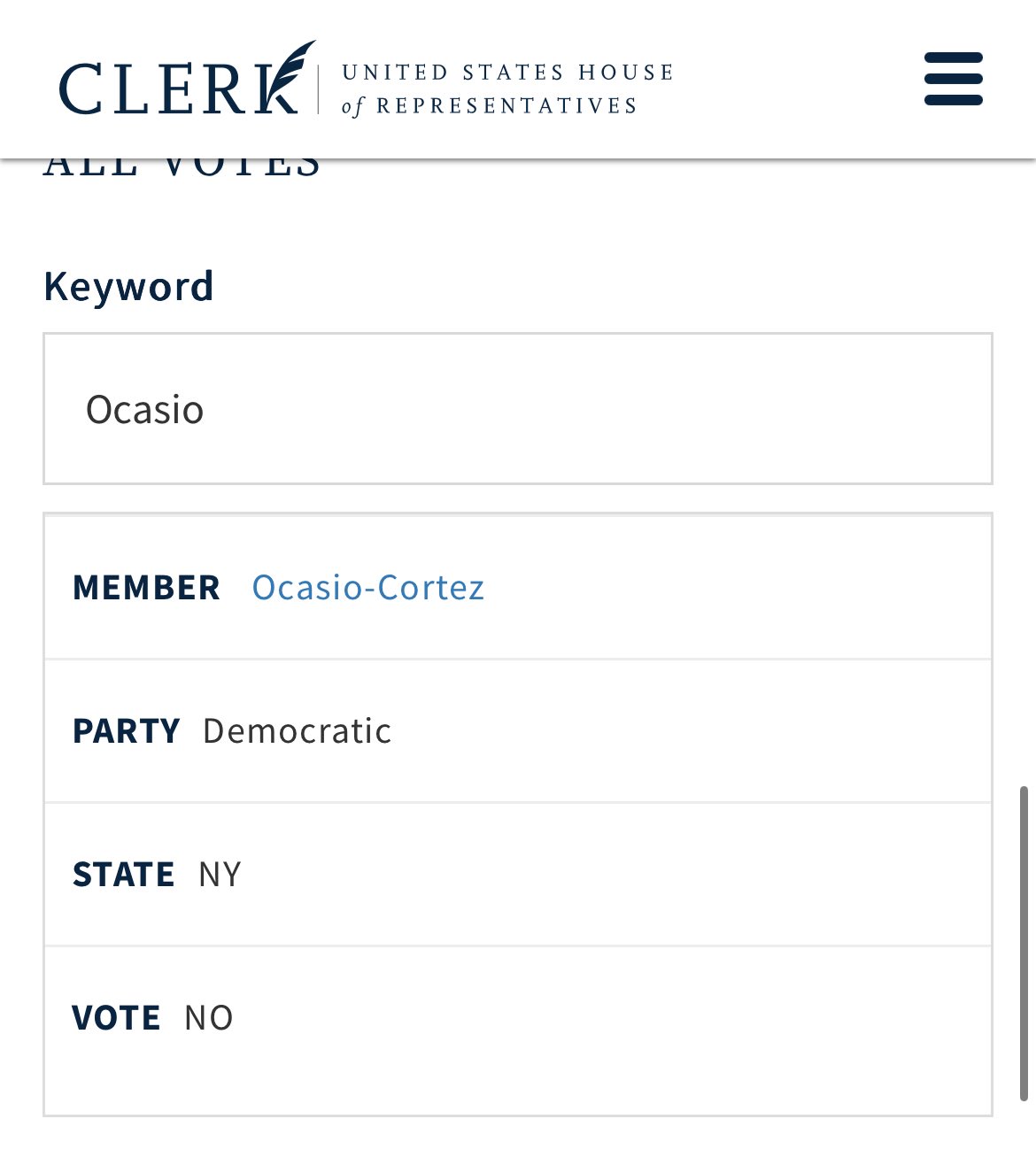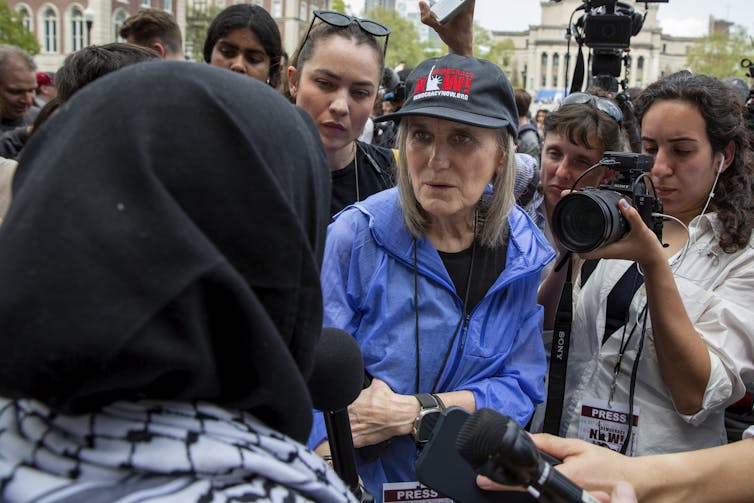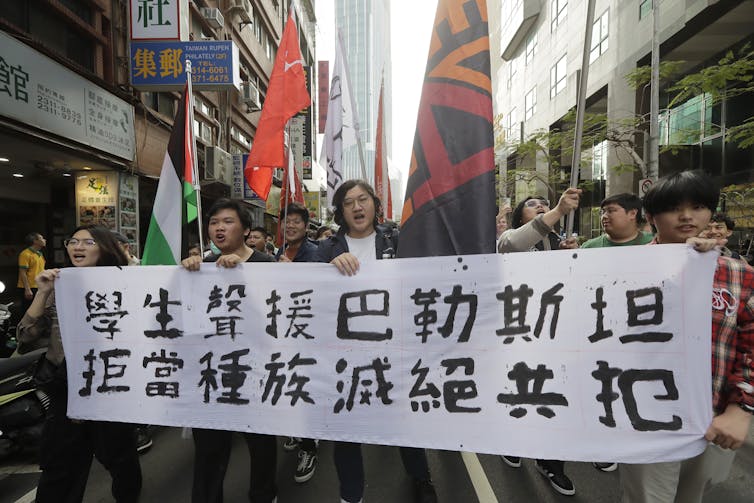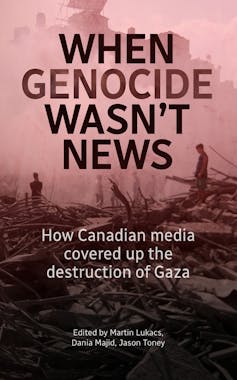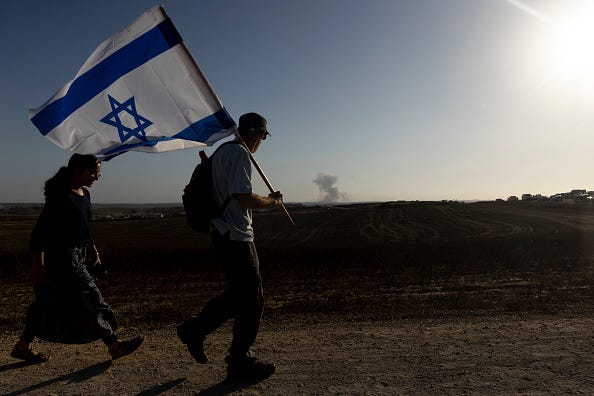It takes a judge to defend free speech.
State Dept. Official Says Criticism of Israel Can Lead to Visa Revocations
The head of the Bureau of Consular Affairs said his office regularly weighed criticism of Israel when determining whether to deny or revoke student visas.
Listen to this article · 5:27 min Learn more

A pro-Palestinian demonstration at Dartmouth College in New Hampshire in May. Credit...Caleb Kenna for The New York Times

By Zach Montague
Reporting from Washington
July 18, 2025
A senior State Department official testified Friday that his office, which the Trump administration has tasked with vetting foreign students’ social media posts and revoking student visas, has operated this year without a working definition of “antisemitism” and routinely considers criticism of Israel as part of its work.
The testimony, at the end of a two-week trial focused on the Trump administration’s efforts to deport students such as Mahmoud Khalil, Rumeysa Ozturk and others, helped build the case by the academic groups behind the lawsuit, who have argued that the government systematically targeted students based on their remarks about Israel.
During a heated back-and-forth in Federal District Court in Boston, John Armstrong, the senior bureau official in the Bureau of Consular Affairs, said that the State Department regularly took into account speech or actions that it saw as hostile toward Israel.
Pushed for examples of things he might consider in weighing whether to deny or revoke a student’s visa, Mr. Armstrong testified that calls for limiting military aid to Israel or “denouncing Zionism” could all factor in his agency’s decisions.
“In your view, a statement criticizing Israel’s actions in Gaza could be covered depending on the statement, right?” asked Alexandra Conlon, a lawyer representing the organizations behind the lawsuit.
“Yes, depending on the statement, it could definitely,” he said. “You say that they’re worse than Hitler with what they’re doing in Gaza? — that would be a statement that, I think, would lead in that direction that you seem to be going, counselor.”
But Mr. Armstrong said the State Department did not conduct its reviews based on a common understanding of what qualified as “antisemitism.”
“I cannot remember a concrete piece of guidance,” he said. “It seems to me, there may have been some, but I do not remember a concrete cable where I can say, ‘This cable defines antisemitism.’”
Earlier in his testimony, Mr. Armstrong stressed repeatedly that he and his colleagues consider “the totality of the situation,” especially when making a recommendation to the secretary of state. In cases like that of Mr. Khalil — who is a lawful permanent resident — immigration laws required that Secretary of State Marco Rubio had to personally sign off on beginning a process to deport him.
At one point, Judge William G. Young, who is presiding over the trial, intervened to ask for clarity about how Mr. Armstrong himself determined whether certain statements or actions were antisemitic.
“In my opinion, antisemitism is unjustified views, biases or prejudices or actions against Jewish people — or Israel — that are the result of hatred towards them,” he said.
Mr. Armstrong did not say that his office had endeavored to deport noncitizens based on criticism of Israel alone. But he indicated that the office regularly took into account commentary that the groups behind the lawsuit have argued is protected by the First Amendment.
“In other words, in your understanding, antisemitism includes hatred or prejudice against Israel and Israeli people, right?” Ms. Conlon asked.
“Yes,” he replied.
“In my understanding, antisemites will sometimes try to hide their views and say they’re not against Jews — they’re just against Israel — which is a farcical argument, in my mind,” he added. “It’s just a dodge.”
The focus on antisemitism in higher education stemmed from a Trump executive order back in January directing federal agencies to guide colleges to “report activities by alien students and staff” that could be considered antisemitic or supportive of terrorism. Those reports could spur investigations and deportations.
At various points on Friday, Mr. Armstrong appeared to bristle at Ms. Conlon’s questions, contending that her cross-examination minimized the gravity of the situation.
“This is not a mundane thing,” he said. “If we get this wrong, we get the Molotov cocktail attack in Colorado. If we get these sort of things wrong, you get the Boston bomber. If we get this stuff wrong, you get 9/11.”
“This is very serious stuff, counselor, and I don’t think you realize this,” he said.
But Mr. Armstrong’s description of his agency’s work helped to support, at least in part, assertions made by the American Association of University Professors, which brought the lawsuit. The association has argued that individual arrests of students like Mr. Khalil, Ms. Ozturk and others were part of a larger policy.
In court on Thursday, Judge Young laid out his own thinking after listening to nearly two weeks of testimony.
While the government has repeatedly asserted that comments like those discussed on Friday were not only antisemitic but directly sympathetic to groups like Hamas and other terrorist organizations, Judge Young concluded they were not, and almost certainly constitute protected speech under the First Amendment.
“Criticism of the state of Israel, use of the words that I mentioned, does not — it’s political speech — it does not constitute pro-Hamas support,” he said. “Pro-Hamas support has to be something more than that.”
Zach Montague is a Times reporter covering the federal courts, including the legal disputes over the Trump administration’s agenda.
State Dept. Official Says Criticism of Israel Can Lead to Visa Revocations
The head of the Bureau of Consular Affairs said his office regularly weighed criticism of Israel when determining whether to deny or revoke student visas.
Listen to this article · 5:27 min Learn more
- Share full article

A pro-Palestinian demonstration at Dartmouth College in New Hampshire in May. Credit...Caleb Kenna for The New York Times

By Zach Montague
Reporting from Washington
July 18, 2025
A senior State Department official testified Friday that his office, which the Trump administration has tasked with vetting foreign students’ social media posts and revoking student visas, has operated this year without a working definition of “antisemitism” and routinely considers criticism of Israel as part of its work.
The testimony, at the end of a two-week trial focused on the Trump administration’s efforts to deport students such as Mahmoud Khalil, Rumeysa Ozturk and others, helped build the case by the academic groups behind the lawsuit, who have argued that the government systematically targeted students based on their remarks about Israel.
During a heated back-and-forth in Federal District Court in Boston, John Armstrong, the senior bureau official in the Bureau of Consular Affairs, said that the State Department regularly took into account speech or actions that it saw as hostile toward Israel.
Pushed for examples of things he might consider in weighing whether to deny or revoke a student’s visa, Mr. Armstrong testified that calls for limiting military aid to Israel or “denouncing Zionism” could all factor in his agency’s decisions.
“In your view, a statement criticizing Israel’s actions in Gaza could be covered depending on the statement, right?” asked Alexandra Conlon, a lawyer representing the organizations behind the lawsuit.
“Yes, depending on the statement, it could definitely,” he said. “You say that they’re worse than Hitler with what they’re doing in Gaza? — that would be a statement that, I think, would lead in that direction that you seem to be going, counselor.”
But Mr. Armstrong said the State Department did not conduct its reviews based on a common understanding of what qualified as “antisemitism.”
“I cannot remember a concrete piece of guidance,” he said. “It seems to me, there may have been some, but I do not remember a concrete cable where I can say, ‘This cable defines antisemitism.’”
Earlier in his testimony, Mr. Armstrong stressed repeatedly that he and his colleagues consider “the totality of the situation,” especially when making a recommendation to the secretary of state. In cases like that of Mr. Khalil — who is a lawful permanent resident — immigration laws required that Secretary of State Marco Rubio had to personally sign off on beginning a process to deport him.
At one point, Judge William G. Young, who is presiding over the trial, intervened to ask for clarity about how Mr. Armstrong himself determined whether certain statements or actions were antisemitic.
“In my opinion, antisemitism is unjustified views, biases or prejudices or actions against Jewish people — or Israel — that are the result of hatred towards them,” he said.
Mr. Armstrong did not say that his office had endeavored to deport noncitizens based on criticism of Israel alone. But he indicated that the office regularly took into account commentary that the groups behind the lawsuit have argued is protected by the First Amendment.
“In other words, in your understanding, antisemitism includes hatred or prejudice against Israel and Israeli people, right?” Ms. Conlon asked.
“Yes,” he replied.
“In my understanding, antisemites will sometimes try to hide their views and say they’re not against Jews — they’re just against Israel — which is a farcical argument, in my mind,” he added. “It’s just a dodge.”
The focus on antisemitism in higher education stemmed from a Trump executive order back in January directing federal agencies to guide colleges to “report activities by alien students and staff” that could be considered antisemitic or supportive of terrorism. Those reports could spur investigations and deportations.
At various points on Friday, Mr. Armstrong appeared to bristle at Ms. Conlon’s questions, contending that her cross-examination minimized the gravity of the situation.
“This is not a mundane thing,” he said. “If we get this wrong, we get the Molotov cocktail attack in Colorado. If we get these sort of things wrong, you get the Boston bomber. If we get this stuff wrong, you get 9/11.”
“This is very serious stuff, counselor, and I don’t think you realize this,” he said.
But Mr. Armstrong’s description of his agency’s work helped to support, at least in part, assertions made by the American Association of University Professors, which brought the lawsuit. The association has argued that individual arrests of students like Mr. Khalil, Ms. Ozturk and others were part of a larger policy.
In court on Thursday, Judge Young laid out his own thinking after listening to nearly two weeks of testimony.
While the government has repeatedly asserted that comments like those discussed on Friday were not only antisemitic but directly sympathetic to groups like Hamas and other terrorist organizations, Judge Young concluded they were not, and almost certainly constitute protected speech under the First Amendment.
“Criticism of the state of Israel, use of the words that I mentioned, does not — it’s political speech — it does not constitute pro-Hamas support,” he said. “Pro-Hamas support has to be something more than that.”
Zach Montague is a Times reporter covering the federal courts, including the legal disputes over the Trump administration’s agenda.






